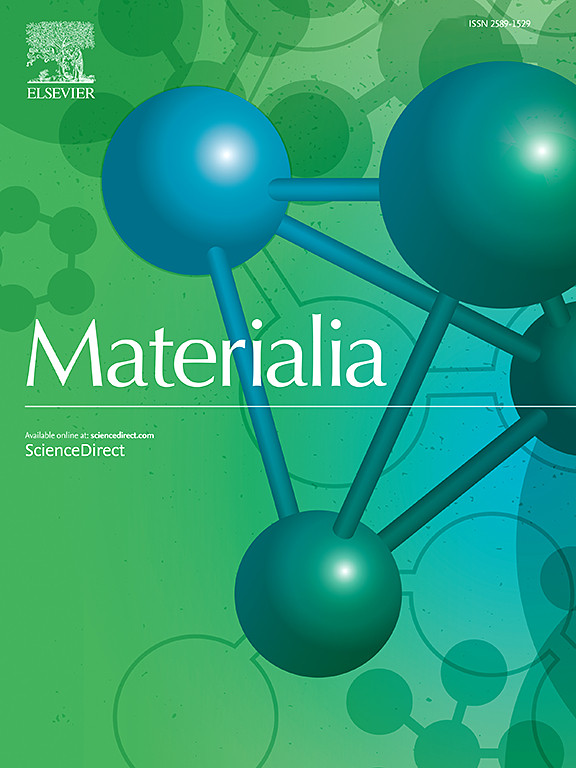Monolithic copper-doped carbonated apatite synthesized at low-temperature exhibits in vitro antibacterial effect and in vivo bone regenerative properties
IF 3
Q2 MATERIALS SCIENCE, MULTIDISCIPLINARY
引用次数: 0
Abstract
Copper (Cu) is a promising dopant for synthetic bone substitutes due to its antibacterial and pro-angiogenic properties. In this study, we synthesized monolithic carbonated apatite (CO3Ap) doped with Cu2+ ions using a low-temperature dissolution-precipitation approach, avoiding high-temperature processing and phase decomposition. The resulting Cu-CO3Ap scaffolds retained a single-phase apatitic structure and exhibited compositional homogeneity, low crystallinity, and interconnected porosity. The highest Cu content (4.45 ± 0.56 mass %) achieved ∼95 % in vitro bacterial growth inhibition against Staphylococcus epidermidis. In vivo implantation in rabbit femoral defects demonstrated comparable bone regeneration between undoped and Cu-doped CO3Ap groups, confirming biocompatibility and osteoconductivity. These findings suggest that low-temperature Cu incorporation into CO3Ap enables the development of antibacterial bone scaffolds without compromising regenerative potential.

低温合成的单片掺铜碳化磷灰石具有体外抗菌和体内骨再生的特性
铜具有抗菌和促血管生成的特性,是一种很有前途的人工骨替代物掺杂剂。在这项研究中,我们采用低温溶解-沉淀的方法合成了掺杂Cu2+离子的整体碳化磷灰石(CO3Ap),避免了高温加工和相分解。所得的Cu-CO3Ap支架保留了单相磷灰石结构,具有组成均匀性、低结晶度和相互连接的孔隙度。最高Cu含量(4.45±0.56质量%)对表皮葡萄球菌的体外细菌生长抑制率达到~ 95%。未掺杂和cu掺杂的CO3Ap组在兔股骨缺损体内植入表现出相当的骨再生,证实了生物相容性和骨导电性。这些发现表明,低温Cu掺入CO3Ap可以在不影响再生潜力的情况下开发抗菌骨支架。
本文章由计算机程序翻译,如有差异,请以英文原文为准。
求助全文
约1分钟内获得全文
求助全文
来源期刊

Materialia
MATERIALS SCIENCE, MULTIDISCIPLINARY-
CiteScore
6.40
自引率
2.90%
发文量
345
审稿时长
36 days
期刊介绍:
Materialia is a multidisciplinary journal of materials science and engineering that publishes original peer-reviewed research articles. Articles in Materialia advance the understanding of the relationship between processing, structure, property, and function of materials.
Materialia publishes full-length research articles, review articles, and letters (short communications). In addition to receiving direct submissions, Materialia also accepts transfers from Acta Materialia, Inc. partner journals. Materialia offers authors the choice to publish on an open access model (with author fee), or on a subscription model (with no author fee).
 求助内容:
求助内容: 应助结果提醒方式:
应助结果提醒方式:


